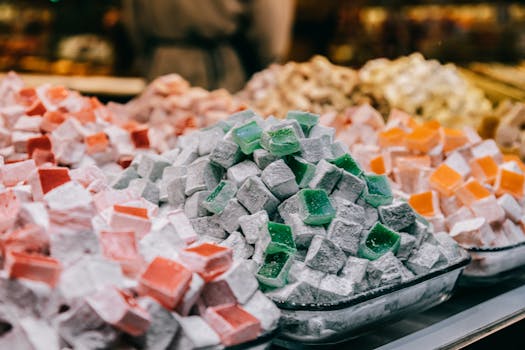Benefits
Culinary Versatility
Cultural Significance
Portion Control
Get creative with sugar cube
Turning ordinary beverages into a culinary experience, a sugar cube soaked in bitters becomes the heart of an old-fashioned cocktail, adding depth with each dissolve
In the realm of visual art, a sugar cube, when dyed, transforms into pixel art, creating edible mosaics that are as sweet on the tongue as they are on the eye
For a touch of whimsy at tea time, infusing sugar cubes with lavender or rose petals offers a floral surprise, subtly flavoring teas with each cube's melt
In the science of kitchen chemistry, a sugar cube becomes the catalyst in homemade carbonated drinks, where its reaction with baking soda and vinegar creates naturally fizzy refreshments
Lastly, as a secret garden helper, burying a sugar cube at the base of hydrangeas changes their color, illustrating a magical intersection of gardening and gastronomy
Something you can make with sugar cube
Origin
Sugar cubes and loose sugar are derived from sugar cane or sugar beets. The cultivation of sugar cane dates back thousands of years and is believed to have originated in Southeast Asia. It was later spread to other parts of the world, including India, Persia, and the Mediterranean region. The process of extracting sugar from sugar cane involves crushing the cane to extract its juice, which is then boiled and evaporated to produce sugar crystals. Similarly, sugar beets, which are mainly grown in temperate regions, are processed to extract sugar. The extracted sugar is then refined to produce different forms, including sugar cubes and loose granulated sugar. Today, sugar is produced in many countries around the world, with leading producers including Brazil, India, China, and Thailand.


